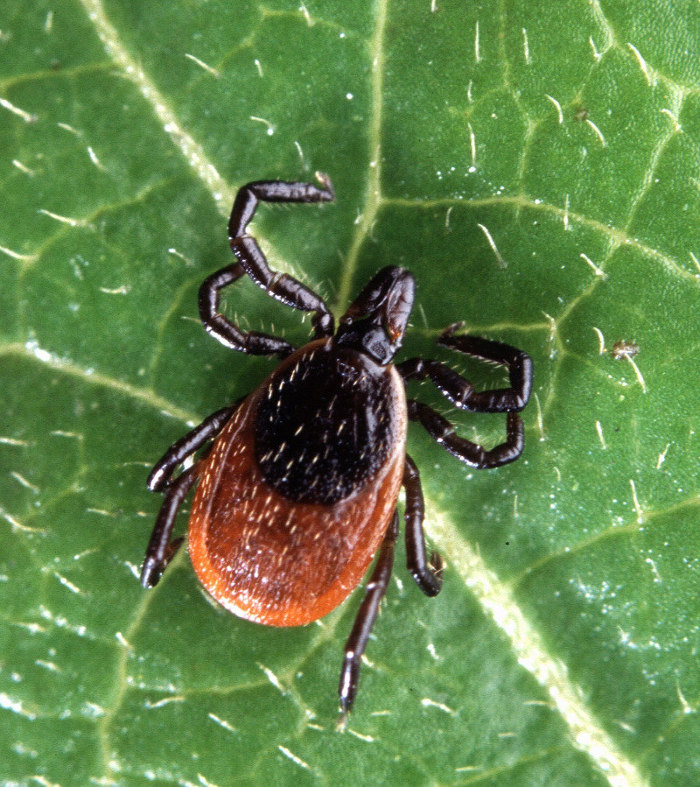With the return of warmer weather, Grey Bruce Public Health is reminding people to take steps to prevent tick bites and protect themselves from Lyme disease while enjoying the outdoors.
Lyme disease is a potentially serious infection that can be transmitted to humans from the bite of a specific tick – the blacklegged or deer tick – that is carrying the bacteria B. burgdoferi. In most cases, infected ticks must be attached to a person for at least 24 hours to pass on the disease-causing bacteria.
“The best way to prevent Lyme disease and other tick-borne illnesses is to avoid being bitten by a tick. Staying on cleared paths or trails, wearing clothing that impedes ticks from reaching the skin, and using bug repellent with DEET or Icaridin while outdoors are all ways to prevent tick bites,” explained Senior Public Health Manager Andrew Barton. “And because ticks must be attached for some time to pass on the bacteria that causes Lyme disease, checking yourself, your family members, and pets for ticks after spending time outdoors and promptly removing any attached ticks is also critical to preventing the infection.”
Blacklegged ticks are present in Grey-Bruce and most often found in wooded areas, in fields, among tall grass, and in leaf piles. Not all blacklegged ticks are infected with the bacteria that causes Lyme disease.
People can prevent tick bites by:
- Wearing long-sleeved shirts and pants when in tick habitat and tucking their shirts into pants and pants into socks;
- Wearing closed-toe shoes;
- Using bug spray containing DEET or Icaridin;
- Wearing light-coloured clothing (to make it easier to spot ticks that may have climbed onto them);
- Using a sticky lint remover to remove any ticks that may have crawled onto shoes or clothing;
- Performing full body checks for ticks upon returning home and taking a shower/bath to wash off ticks that haven’t bitten yet and find any that have recently bitten;
- Checking pets for ticks and asking their veterinarian for recommendations on keeping ticks off pets;
- Putting clothes in the dryer for at least 10 minutes upon returning home (to kill any ticks).
If bitten by a tick, it’s important to remove it immediately. GBPH has developed an infographic for the proper way to remove a tick.
Grey Bruce Public Health follows up with all local individuals diagnosed with Lyme disease. If caught early, Lyme disease can be treated effectively with antibiotics.
Early Lyme disease symptoms can include fever, headache, muscle/joint pain, fatigue, and a bull’s-eye rash. Residents should consult a healthcare provider if experiencing these symptoms. If left untreated, Lyme disease can lead to recurring arthritis, neurological problems, numbness, or paralysis.
Eligibility information for post-exposure prophylaxis to prevent Lyme disease is available online (https://www.hqontario.ca/Portals/0/documents/evidence/qs-lyme-disease-clinical-guidance-2023-en.pdf)
For tick identification, use the free online platform eTick (https://www.etick.ca/en)
More information on preventing tick bites and Lyme disease is available on the Public Health Agency of Canada’s website and Grey Bruce Public Health’s tick webpage (https://www.publichealthgreybruce.on.ca/Your-Environment/Vector-borne-Diseases/Ticks).












